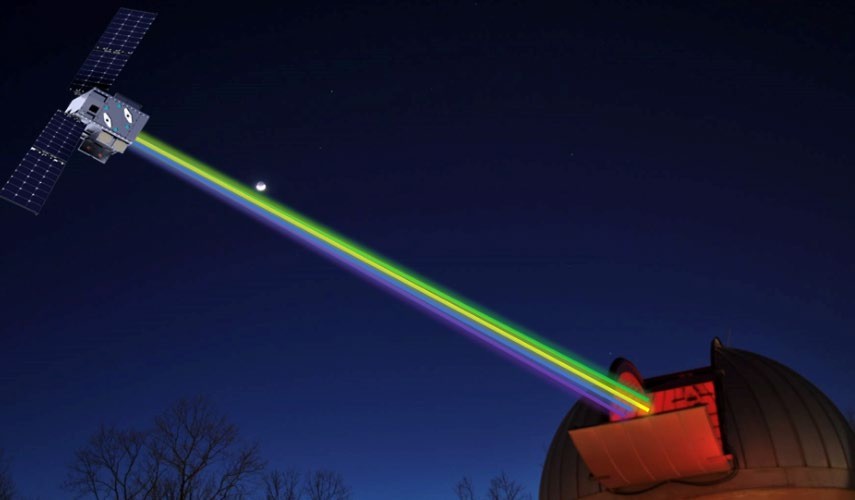
The Landolt satellite will beam lasers at telescopes on Earth and serve as an absolute flux calibrator
© Eliad Peretz
Come 2029, skywatchers can glimpse at least one ‘star’ in the sky made by humans. NASA announced plans to place a small satellite in Earth orbit at a little over 35,400 kilometres (22,000 miles) above our planet’s surface – far enough for the satellite to mimic a real star to telescopes on Earth. Scientists say the satellite, named Landolt, wouldn’t be bright enough to be seen with the unaided eye, but if you happen to have a personal telescope at home, you may be able to spot a shoebox-sized object hovering above the United States in a stationary position. The mission’s primary goal is to help calibrate telescopes on Earth and create new, more accurate catalogues of the brightnesses of real stars.
Once in orbit, the satellite will beam eight onboard lasers at ground-based telescopes, which would observe the artificial star in the same frame as their science targets. After measuring how much of the lasers’ light – which would have a predetermined brightness – gets absorbed by our planet’s atmosphere, astronomers can compare it with about 60 real stars, thereby cataloguing stellar brightness as seen from Earth more precisely than conventional methods can achieve. “Lasers in space is a pretty cool selling point, as is getting to work on a mission,” team member Jamie Tayar, an assistant professor of astronomy at the University of Florida, said. “But scientifically, what we’re trying to do here is really fundamental.”